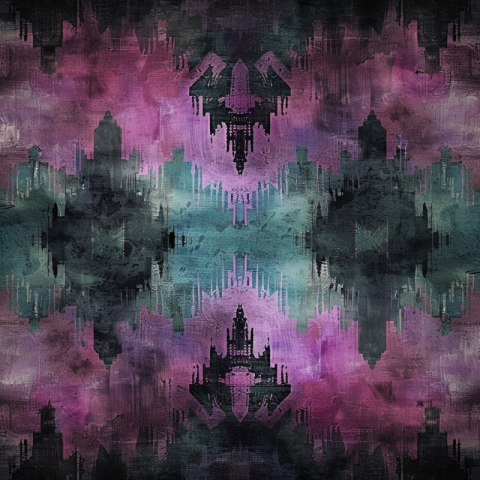











Textured Wall Backgrounds: Adding Depth & Dimension
In the realm of visual design, backgrounds play a crucial role. They set the stage, establish the mood, and enhance the overall aesthetic appeal of a project. While solid colors and gradients have their place, textured wall backgrounds offer a unique opportunity to add depth, dimension, and a touch of realism to your designs. This comprehensive guide will explore the world of textured wall backgrounds, covering their types, applications, and how to effectively incorporate them into your creative endeavors.
What are Textured Wall Backgrounds?
Textured wall backgrounds are digital images or patterns that mimic the appearance and feel of real-world wall surfaces. They encompass a vast array of textures, including:
- Fabric Textures: Linen, canvas, burlap, silk, velvet - these backgrounds evoke a sense of warmth, comfort, and sophistication.
- Stone Textures: Marble, granite, slate, limestone, travertine - these provide a natural, earthy feel and convey strength and durability.
- Brick Textures: Red brick, white brick, painted brick, distressed brick - these offer a rustic, industrial, or vintage aesthetic.
- Wood Textures: Oak, pine, walnut, reclaimed wood, painted wood - these add warmth, character, and a connection to nature.
- Concrete Textures: Smooth concrete, polished concrete, rough concrete, stained concrete - these provide a modern, industrial, and minimalist feel.
- Plaster Textures: Stucco, Venetian plaster, textured paint - these create visual interest and a sense of artistry.
- Paper Textures: Watercolor paper, parchment, craft paper, recycled paper - these are perfect for artistic, handmade, or eco-friendly designs.
Why Use Textured Wall Backgrounds?
The benefits of using textured wall backgrounds are numerous:
- Enhanced Realism: Textures add a tactile quality to your designs, making them feel more tangible and lifelike.
- Added Depth and Dimension: The interplay of light and shadow on textured surfaces creates visual interest and prevents designs from appearing flat.
- Emotional Impact: Different textures evoke different emotions. For example, wood can feel warm and inviting, while concrete might feel cold and industrial.
- Versatility: Textured backgrounds can be used in a wide range of design projects, from websites and presentations to social media graphics and print materials.
- Visual Interest: Textures break up monotony and create a more engaging visual experience for the viewer.
- Uniqueness: Textured backgrounds can help your designs stand out from the crowd.
Applications of Textured Wall Backgrounds:
Textured wall backgrounds are incredibly versatile and can be used in a variety of contexts:
- Website Design: Use them as website backgrounds, section backgrounds, or to highlight specific content areas.
- Graphic Design: Incorporate them into posters, flyers, brochures, business cards, and other marketing materials.
- Presentations: Use them as slide backgrounds to make your presentations more visually appealing.
- Social Media Graphics: Create eye-catching backgrounds for your social media posts, stories, and profile headers.
- Photography: Use them as backdrops for product photography or portrait photography.
- Video Editing: Incorporate them into your videos to create interesting title sequences, transitions, or lower thirds.
- UI/UX Design: Use them as backgrounds for apps, interfaces, and other digital products.
How to Choose the Right Textured Wall Background:
Selecting the appropriate textured background is crucial for achieving the desired effect. Consider the following factors:
- Project Theme: Choose a texture that aligns with the overall theme and style of your project.
- Color Palette: Ensure that the background color complements your existing color scheme.
- Content: Consider the content that will be placed on top of the background. The texture should enhance, not detract from, the content.
- Resolution: Choose a high-resolution background to ensure that it looks crisp and sharp on all devices.
- File Format: Common file formats for textured backgrounds include JPG, PNG, and TIFF. Choose the format that best suits your needs.
- Scale and Repetition: Pay attention to the scale of the texture. A texture that looks good at a small size might not look good when scaled up. Also, consider whether the texture is seamless and can be repeated without noticeable edges.
Tips for Using Textured Wall Backgrounds:
- Subtlety is Key: Often, a subtle texture is more effective than an overwhelming one.
- Adjust Opacity: Don't be afraid to adjust the opacity of the background to fine-tune the effect.
- Layering: Experiment with layering multiple textures to create unique and complex effects.
- Blending Modes: Use blending modes in your design software to create interesting interactions between the background and the foreground elements.
- Experiment: Don't be afraid to try different textures and combinations until you find the perfect look.
Conclusion:
Textured wall backgrounds are a powerful tool for adding depth, dimension, and realism to your designs. By understanding the different types of textures available, their applications, and how to choose and use them effectively, you can elevate your creative projects to the next level. Explore the vast world of textured backgrounds and unlock a new realm of design possibilities.
Textured Wall Backgrounds, Wall Textures, Brick Wall Background, Wood Wall Background, Stone Wall Background, Concrete Wall Background, Fabric Wall Background, Seamless Wall Textures, High-Resolution Wall Backgrounds, Free Wall Backgrounds, Premium Wall Backgrounds, Rustic Wall Backgrounds, Modern Wall Backgrounds, Vintage Wall Backgrounds, Industrial Wall Backgrounds.

